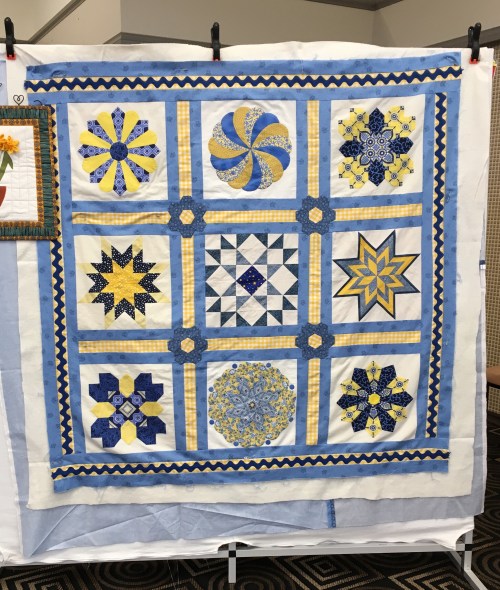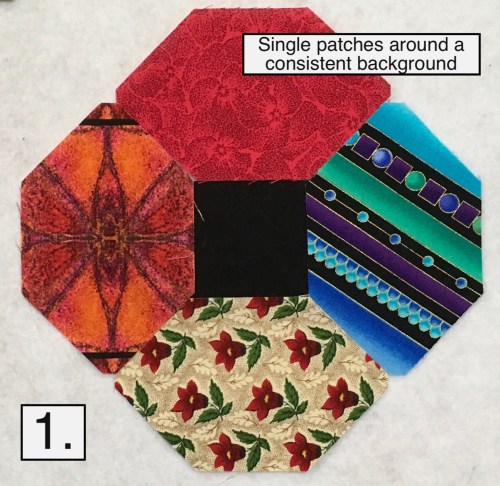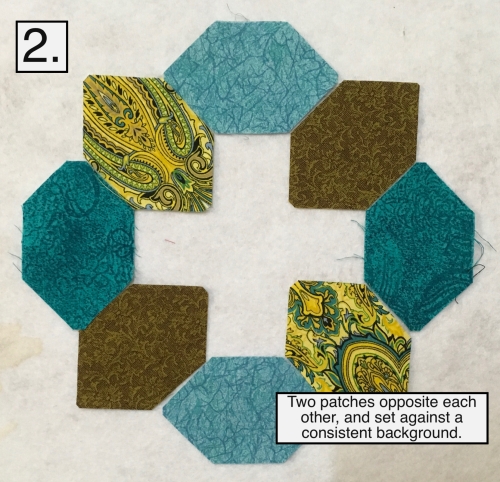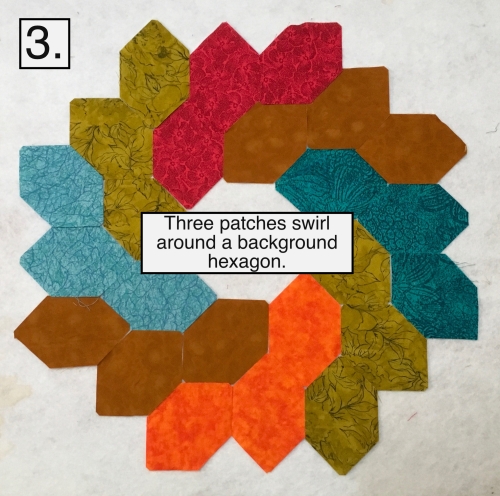My local guild – along with many others Australia wide – hosts ‘The Biggest Morning Tea’ every year to raise funds for cancer research.
As part of the gathering, a challenge is issued to create a 12.5″ block in a specified colour in any technique. This year, Lavender, was the chosen colour as it represents all cancers.
All the blocks are gathered and put together into a quilt, or quilts, or runners, dependent upon the number of blocks received. These are then used to raise funds at the following year’s Biggest Morning Tea.
Last year the colours were blue and yellow, the colours of the Anti-Cancer Council of Australia, and this is one of the small quilts.

There are no surprises, that the two corner Patchwork of the Cross blocks are my contribution – as I enjoy collating Patchwork of the Cross on a Pinterest board.
Two of my other blocks also made it into this quilt, the two Dresden Plate blocks on the opposing corners.
I recently came across the book ‘Distinctive Dresdens’ by Katia Marek,

It became an opportune moment to have a go at making a couple of these intriguing versions, using this year’s theme colour of lavender. A bit later after some fussy cutting, a play with light and dark, and appliqué… these two blocks were ready for the challenge.


Inserted plates, opened out and ironed flat, form the pointy triangles.
Now as to next year, there are many more in the book to try – wonder what the colour will be and which style to try!




 Odd numbers of three patches make a lovely swirly block …
Odd numbers of three patches make a lovely swirly block … I think Lucy would like the idea of using up left over patches.
I think Lucy would like the idea of using up left over patches.

















You must be logged in to post a comment.